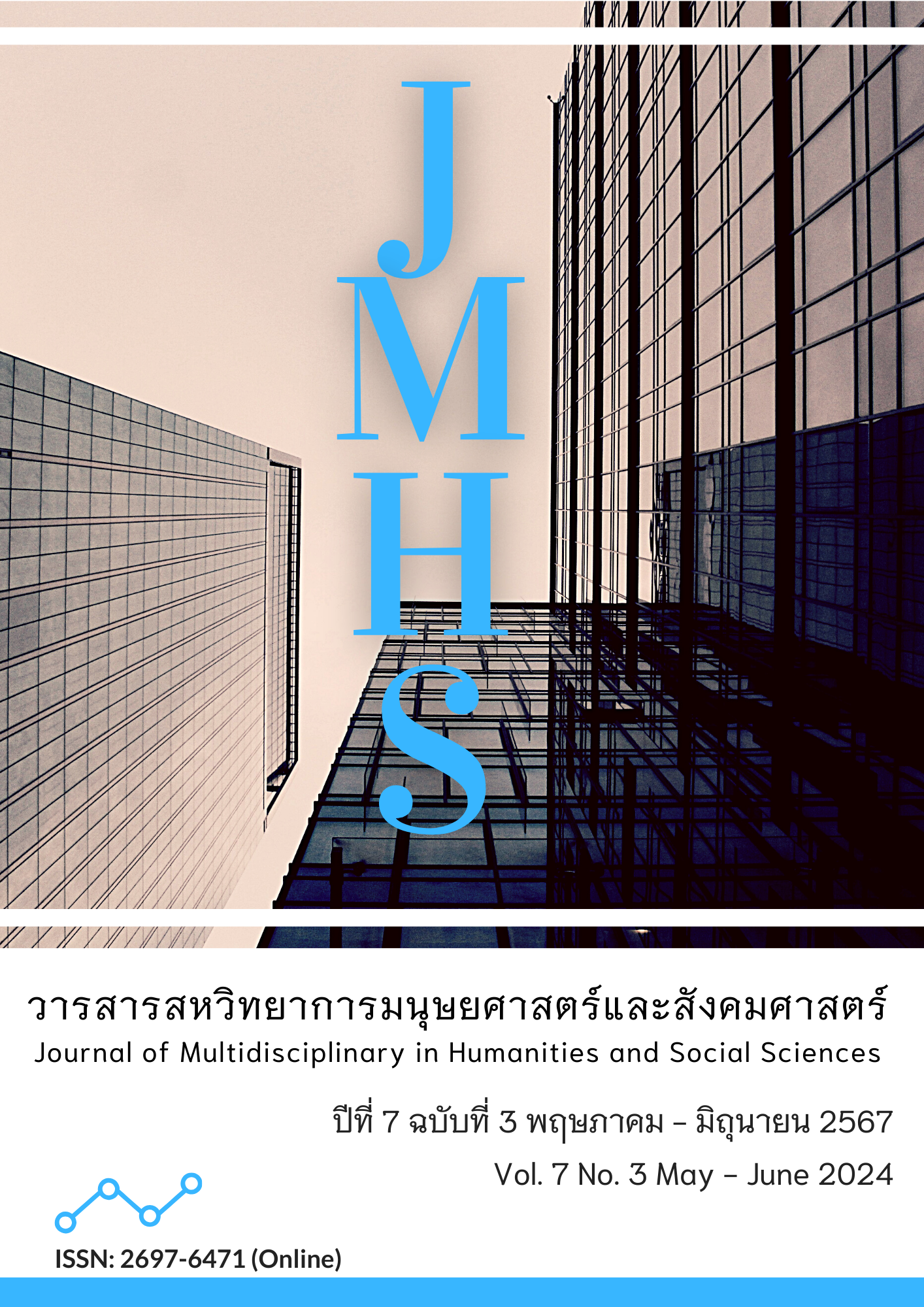Digital Technology and Information Expression in the Painting Works of Chinese Artists Born in the 1990s in the Era of Globalization
Main Article Content
Abstract
This paper aimed to explore the integration of digital technology and information expression in the paintings of Chinese artists born in the 1990s, amidst the globalization era. Simultaneously, it delves into the intricate representation of art creation, individual, and cultural identity complexities influenced by globalization. The study also delved into artists' profound reflections on the information society. Through a meticulous selection of representative artists born in the 1990s as research subjects, the study employed methods such as semi-structured interviews, descriptive statistics, and content analysis for an in-depth investigation. The findings revealed the following aspects: Firstly, Chinese post-90s artists adeptly incorporated digital technology into their paintings, not just as tools but as active participants in the creative process, thereby enriching the expressive forms of art. Secondly, their artworks profoundly explored global themes, presenting insightful reflections on globalization phenomena and providing a unique perspective for cultural studies. Thirdly, the paintings went beyond being mere expressions of individual cultural identity; they also depicted the complexity of identity in the face of globalization. Through visual elements and aesthetic symbols, artists showcase the intricate existence of individuals in the globalizing tide. Finally, artists' profound observations of the information society surpass surface-level awareness of technology, social media, and digital life. Through their paintings, they deeply reflected on these phenomena, demonstrating a unique understanding and critical contemplation of the information society. These findings underscored the artists' ability to flexibly utilize technology, navigate cultural identity, and contemplate the impact of globalization in the digital age. This study provided valuable insights for a profound understanding of the innovative practices and cultural expressions of post-90s Chinese artists in the digital era, offering a fresh perspective for academia, art enthusiasts, and cultural researchers.
Article Details

This work is licensed under a Creative Commons Attribution-NonCommercial-NoDerivatives 4.0 International License.
Views and opinions appearing in the Journal it is the responsibility of the author of the article, and does not constitute the view and responsibility of the editorial team.
References
Cavazza, M., Lugrin, J.-L., Hartley, S., Le Renard, M., Nandi, A., Jacobson, J., & Crooks, S. (2005). Intelligent virtual environments for virtual reality art. Computers & Graphics, 29(6), 852-861.
Chen, X., & Gao, Y. (2022). Integration of Digital Art Works and Virtual Reality Technology. Paper presented at the 2021 International Conference on Machine Learning and Big Data Analytics for IoT Security and Privacy: SPIoT-2021 Vol. 1.
Chun Chen, W. (2021). The Inescapable "Global Art". Paintings Magazine.
Craig, & Kuang. (2015). Themes in contemporary art: visual art after 1980- The body (excerpt). Painting Journal, (6), 54-57.
Gong, Y. (2021). Application of virtual reality teaching method and artificial intelligence technology in digital media art creation. Ecological Informatics, 63, 101304.
Goodman, L. A. (1961). Snowball sampling. The annals of mathematical statistics, 148-170.
Hong, J.-W., & Curran, N. M. (2019). Artificial intelligence, artists, and art: Attitudes toward artwork produced by humans vs. artificial intelligence. ACM Transactions on Multimedia Computing, Communications, and Applications (TOMM), 15(2s), 1-16.
Ni, J. (2021). Media Innovation and Integration: The Trend of Art's Comprehensive Creation Driven by Technology. Journal of Nanjing Art Institute (Fine Arts and Desing), (3), 207-210.
Pan, Y. (2023). The Phenomenon of Art Creation among 'Post-90s'. Delta, (3), 168-170.
Sharina. (2021). The Expansion and Influence of Scientific and Technological Development on the Contents and Themes of Contemporary Art. Chinese Literary Artist, (6), 77-78.
Sochorová, Š., & Jamriška, O. (2021). Practical pigment mixing for digital painting. ACM Transactions on Graphics (TOG), 40(6), 1-11.
Suri, H. (2011). Purposeful sampling in qualitative research synthesis. Qualitative Research Journal, 11(2), 63-75.
Xiaoling, Z. (2019). Reconstruction of Art Contemporaneity in Global Perspective. Fine Art, (9), 19.
Xiaoqing, C. (2021). The Impact of Technological Progress on the Diverse Interaction of Artistic Creation and Aesthetic Appreciation. Journal of Southeast University (Philosophy and Social Sciences Edition), 23(1), 111-127.
Ye, Y. (2021). The Post-1990s Chinese Artists and Their Art: Xin Liu, Wa Liu, and Zipiao Zhang. Senior Projects Spring 2021, 82. https://digitalcommons.bard.edu/senproj_s2021/82


